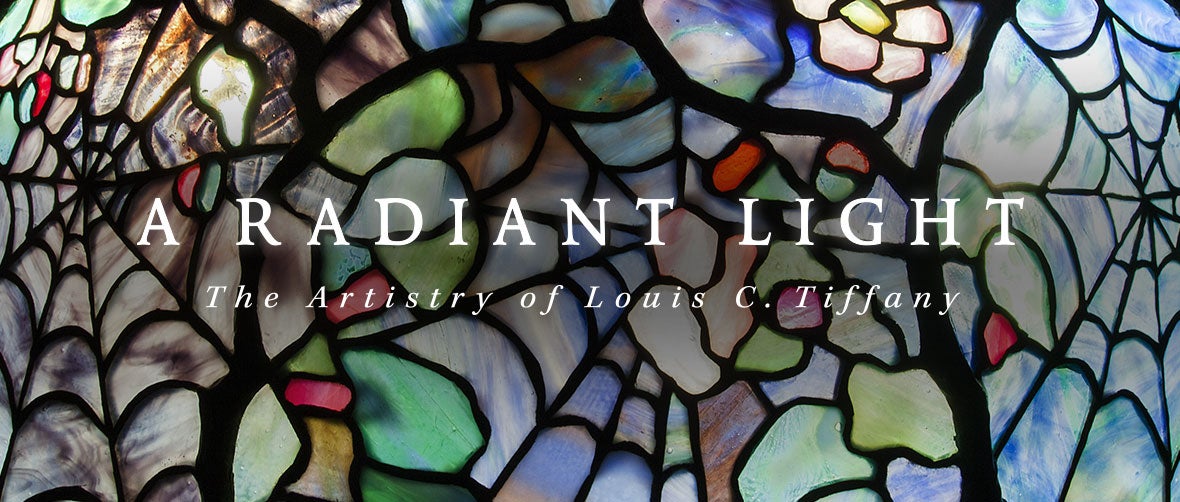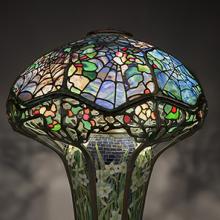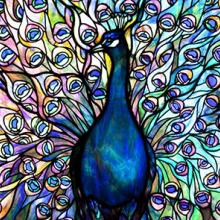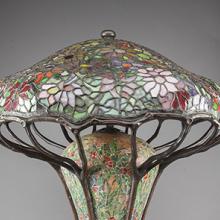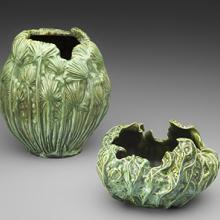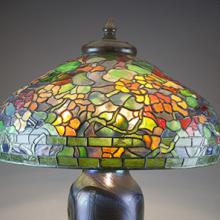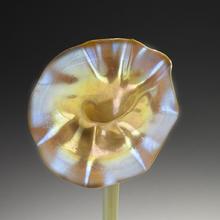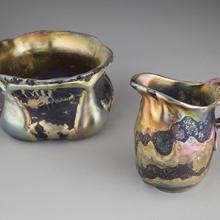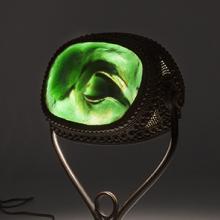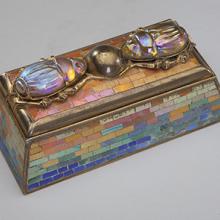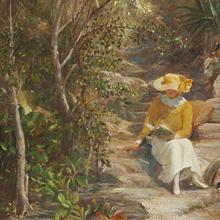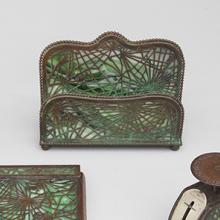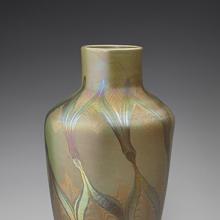A Radiant Light: The Artistry of Louis C. Tiffany
A Radiant Light: The Artistry of Louis C. Tiffany
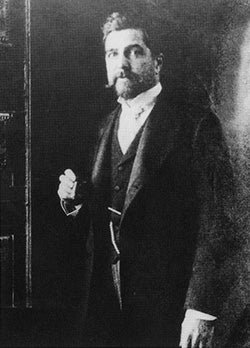 Louis Comfort Tiffany (1848–1933) left a prodigious mark on American glass and decorative arts during his profound career that spanned nearly fifty years. The son of Charles Lewis Tiffany (1812–1902), founder of Tiffany & Co., the world-famous jewelry and silver firm, Louis chose to establish his own reputation rather than follow in his father’s footsteps. As a young adult, Tiffany first pursued a career in painting. He traveled throughout Europe, and later North Africa, with painter Robert Swain Gifford (1840–1905). During the late 1870s, Tiffany shifted his focus to interiors. He designed both private and public spaces as well as furniture before he became captivated by glass.
Louis Comfort Tiffany (1848–1933) left a prodigious mark on American glass and decorative arts during his profound career that spanned nearly fifty years. The son of Charles Lewis Tiffany (1812–1902), founder of Tiffany & Co., the world-famous jewelry and silver firm, Louis chose to establish his own reputation rather than follow in his father’s footsteps. As a young adult, Tiffany first pursued a career in painting. He traveled throughout Europe, and later North Africa, with painter Robert Swain Gifford (1840–1905). During the late 1870s, Tiffany shifted his focus to interiors. He designed both private and public spaces as well as furniture before he became captivated by glass.
By the 1890s, Tiffany pioneered new forms of stained glass, a medium that remained virtually unchanged since the Medieval period. Previously, artisans painted colors onto glass. Both Tiffany and his competitor John Lafarge (1835–1910) developed methods of internally coloring the glass with variegated, opalescent shades in brighter hues and greater densities than ever before possible. In 1893, Tiffany opened a glass factory in Queens, New York, with the assistance of Arthur Nash (1849–1934), an experienced glassmaker from England. Tiffany trademarked his glass, Favrile, a word derived from the Old English meaning handwrought.
Tiffany’s studios produced magnificent leaded-glass windows with themes that reflected the natural world. Tiffany received numerous ecclesiastical commissions for leaded-glass windows with religious scenes during the prosperous late 1800s, when thousands of new churches were built in the United States. The advent of the light bulb and electricity further served as an inspiration for Tiffany’s Favrile glass. Today, Tiffany Studios is perhaps most famous for producing lamps with extraordinary glass shades and bases with naturalistic motifs such as plants, flowers, and insects.
Tiffany’s passion for glass expanded into departments that created blown art glass, glass mosaics, and enamels. His studios also produced metalwork and “fancy goods” such as desk sets and candelabras, fine ceramics, and later jewelry, much of which incorporated glass elements. All of these items evoked the artist’s organic style. Tiffany’s work came to epitomize Art Nouveau or New Art, a modern style of visual arts and architecture inspired by nature that developed in Europe and North America in the late 1880s. It was typically referred to as “Tiffany style” in the United States, due to the artist’s leading influence on the movement there. In the late 1890s, during the height of his career, museums in Europe and the United States began acquiring Tiffany’s works for their collections.
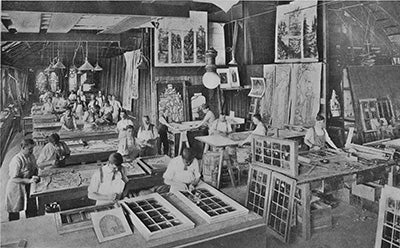 This exhibition explores the resplendent artistry of Louis C. Tiffany. An exquisite Cobweb table lamp, one of only seven known to exist, a one-of-a-kind Zinnia table lamp, a Peacock window panel, oil paintings, glass vases, and ceramics are some of the many exceptional items on display, some of which are from the former Garden Museum, Japan.
This exhibition explores the resplendent artistry of Louis C. Tiffany. An exquisite Cobweb table lamp, one of only seven known to exist, a one-of-a-kind Zinnia table lamp, a Peacock window panel, oil paintings, glass vases, and ceramics are some of the many exceptional items on display, some of which are from the former Garden Museum, Japan.
This exhibition was made possible through a generous loan from Michaan’s Auctions, Alameda, CA. Special thanks to co-curator Allen Michaan.
©2014 by the San Francisco Airport Commission. All rights reserved.
